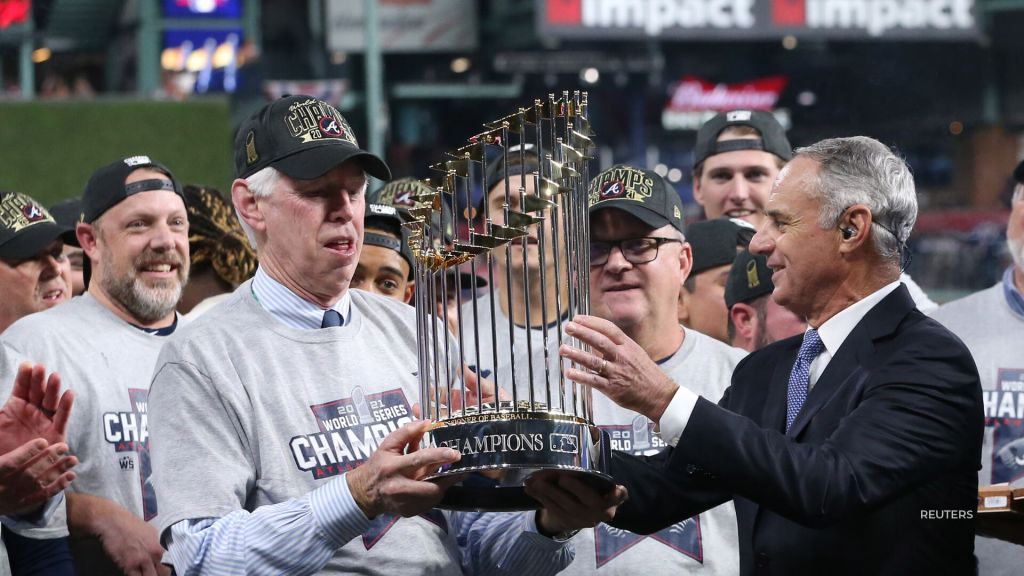Major League Baseball (MLB) officially went into lockout after the league’s collective bargaining agreement (CBA) expired at 11:59 p.m. EST Wednesday. MLB’s 30 controlling owners held a brief digital meeting to reaffirm their lockout decision, and MLB delivered the announcement in an emailed letter to the Major League Baseball Players Association.
“Despite the league’s best efforts to make a deal with the Players Association, we were unable to extend our 26 year-long history of labor peace and come to an agreement with the MLBPA before the current CBA expired,” MLB Commissioner Rob Manfred said in a statement shortly after the commencement of the lockout.
The lockout’s immediate impacts include a signing freeze, the cancellation of next week’s annual winter meetings in Orlando, Florida, and banishing players from team workout facilities.
“This drastic and unnecessary measure will not affect the Players’ resolve to reach a fair contract,” MLB Players Association Executive Director Tony Clark said in a statement. “We remain committed to negotiating a new collective bargaining agreement that enhances competition, improves the product for our fans, and advances the rights and benefits of our membership.”
Eleven weeks remain until pitchers and catchers are to report for spring training, leaving about 70 days to reach a deal allowing for an on-time start. Opening day is set for March 31.
“We hope that the lockout will jumpstart the negotiations and get us to an agreement that will allow the season to start on time,” Manfred wrote. “Simply put, we believe that an offseason lockout is the best mechanism to protect the 2022 season.”
Last-ditch negotiations Wednesday afternoon appeared to go nowhere. Management negotiators left the Players Association’s hotel about nine hours before the deal was set to expire, after meeting for mere minutes.
The MLB lockout will be the latest development in a confrontation between players and owners unfolding over more than two years. The Players Association demanded change following anger over several factors including:
- Declining average salary
- Middle-class players forced out by teams concentrating payroll on the wealthy
- Veterans released in favor of lower-paid youth, especially among clubs tearing down their rosters to rebuild
“We have something in our rules that creates non-competitiveness. It creates something that drives down fan interest,” player agent Scott Boras said Wednesday. “All those things need to be addressed and addressed immediately because the whole integrity and wholesomeness of the game needs to be back to where it was so there’s an incentive to get back to the ball park and win every day.”
Management, intent on preserving salary restraints gained in recent decades, rejected the union’s requests for things like lowering service time needed for free agency and salary arbitration. The league’s average salary is expected to drop from just under $4.1 million in 2017, the first season of the latest CBA, to about $3.7 million when this year’s final figures are calculated.
“We offered to establish a minimum payroll for all clubs to meet for the first time in baseball history; to allow the majority of players to reach free agency earlier through an age-based system that would eliminate any claims of service time manipulation; and to increase compensation for all young players,” Manfred wrote. “When negotiations lacked momentum, we tried to create some by offering to accept the universal designated hitter, to create a new draft system using a lottery similar to other leagues.”
